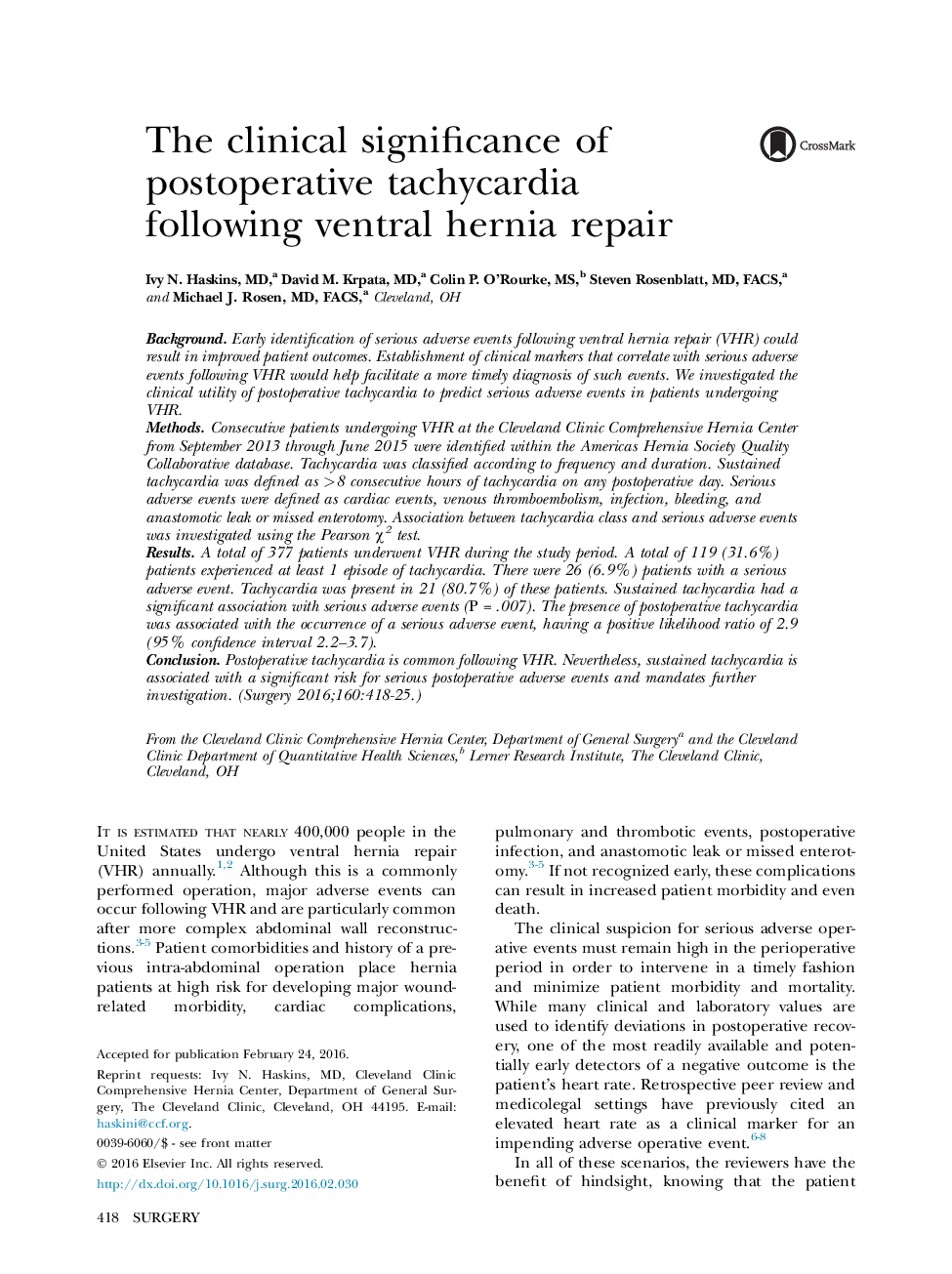| Article ID | Journal | Published Year | Pages | File Type |
|---|---|---|---|---|
| 6254988 | Surgery | 2016 | 8 Pages |
BackgroundEarly identification of serious adverse events following ventral hernia repair (VHR) could result in improved patient outcomes. Establishment of clinical markers that correlate with serious adverse events following VHR would help facilitate a more timely diagnosis of such events. We investigated the clinical utility of postoperative tachycardia to predict serious adverse events in patients undergoing VHR.MethodsConsecutive patients undergoing VHR at the Cleveland Clinic Comprehensive Hernia Center from September 2013 through June 2015 were identified within the Americas Hernia Society Quality Collaborative database. Tachycardia was classified according to frequency and duration. Sustained tachycardia was defined as >8 consecutive hours of tachycardia on any postoperative day. Serious adverse events were defined as cardiac events, venous thromboembolism, infection, bleeding, and anastomotic leak or missed enterotomy. Association between tachycardia class and serious adverse events was investigated using the Pearson Ï2 test.ResultsA total of 377 patients underwent VHR during the study period. A total of 119 (31.6%) patients experienced at least 1 episode of tachycardia. There were 26 (6.9%) patients with a serious adverse event. Tachycardia was present in 21 (80.7%) of these patients. Sustained tachycardia had a significant association with serious adverse events (PÂ =Â .007). The presence of postoperative tachycardia was associated with the occurrence of a serious adverse event, having a positive likelihood ratio of 2.9 (95% confidence interval 2.2-3.7).ConclusionPostoperative tachycardia is common following VHR. Nevertheless, sustained tachycardia is associated with a significant risk for serious postoperative adverse events and mandates further investigation.
